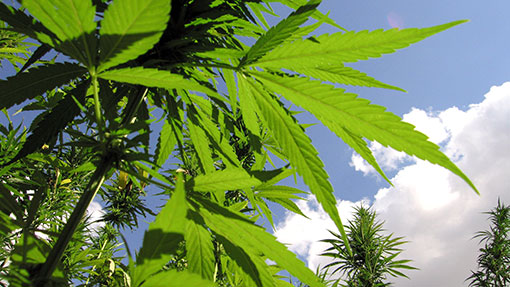High-oleic hemp may be low-input OSR alternative

Hemp crops producing oil with similar qualities to olive oil could become an alternative to oilseed rape in UK rotations, but without many of the disease and pest problems seen with rape.
Scientists at the University of York have successfully developed hemp plants with a dramatically increased content of oleic acid, the fatty acid more often associated with olive and rapeseed oils.
The new oil profile results in an attractive cooking oil that is similar to olive oil in terms of fatty acid content having a much longer shelflife as well as greater heat tolerance and potentially more industrial applications, says Ian Graham of the Centre for Novel Agricultural Products (CNAP).
See also: Borage area set to rise in 2014
He adds that high-oleic acid varieties are a major step towards developing hemp as a commercially attractive break crop for cereal farmers.
Using fast-track molecular plant breeding, the scientists selected hemp plants lacking the active form of an enzyme involved in making polyunsaturated fatty acids. These plants made less poly-unsaturated fatty acids and instead accumulated higher levels of the mono-unsaturated oleic acid.
The research team used conventional plant breeding techniques to develop the plants into a “High-Oleic Hemp” line and higher oleic acid content was demonstrated in a Yorkshire field trial.
“Oil from the new line was almost 80% oleic acid, compared with typical values of less than 10% in the standard hemp line,” he says.
This high mono-unsaturated/low poly-unsaturated fatty acid profile increases the oil’s thermal stability and oil from the new line was shown to have about five times the stability of standard hemp oil. This not only makes the oil more valuable as a cooking oil, but also increases its usefulness for high-temperature industrial processes, he says.
As oilseed rape faces declining yields and increasing attacks from pest and disease, UK farming needs another break crop to ensure the sustainability of its agriculture and maintain cereal yields. Prof Graham believes an improved hemp crop, yielding high-quality oil would provide an excellent alternative.
Hemp is a low-input crop and is also dual-purpose, with the straw being used as a fibre (for bedding, composites and textiles), for biomass and as a source of high-value waxes and secondary metabolites.
“The new line represents a major improvement in hemp as an oil crop. Similar developments in soybean and oilseed rape have opened up new markets for these crops, due to the perceived healthiness and increased stability of their oil.”
In 2014, field trials of the new high-oleic hemp are being rolled out across Europe in order to establish agronomic performance and yield under a range of environmental conditions in advance of launching a commercial crop. The research is published in Plant Biotechnology Journal.

